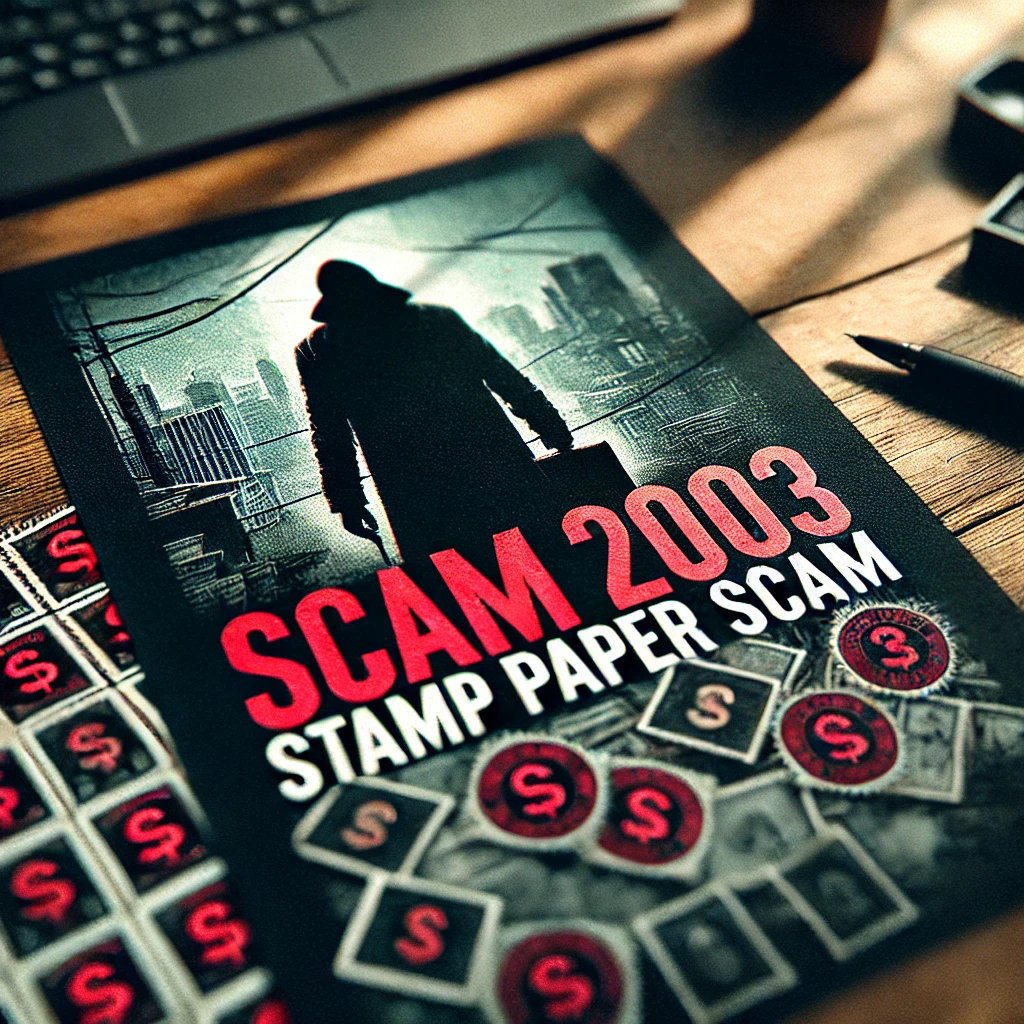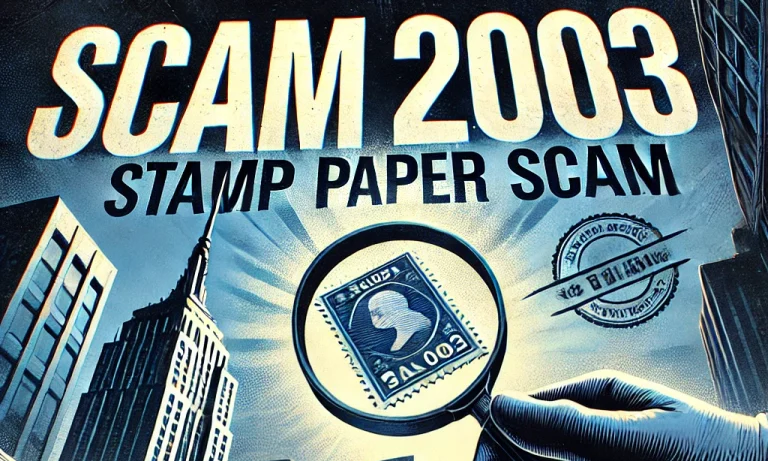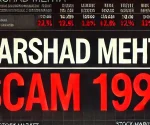India has seen many big scams in its history. After the famous 1992 scam by Harshad Mehta, a bigger scam happened in 2003. People know this scam as the Stamp Paper scam. Stamp papers are used to collect taxes on important documents like agreements, leases, and receipts. The scam involved the printing and selling of fake stamp papers. Abdul Karim Telgi was the mastermind behind this scam. He started as a small vendor and later worked in travel companies. Telgi then came up with the idea of creating fake stamp papers. His scam spread across many states and caused a huge loss to the government./
What is Telgi Scam 2003?
The Stamp Paper Scam, also called the Telgi Scam, was a major financial fraud that began in 1992 and was exposed in 2003. It involved the illegal printing and selling of fake stamp papers across many states in India. The scam was huge, with losses valued at over Rs 30,000 crore. Abdul Karim Telgi was the person behind the scam. He ran the operation with the help of many others, including government officials.
Telgi’s gang made counterfeit stamp papers that looked real. They sold them to people who used them for legal documents, causing huge losses to the government and others.In 2003, authorities caught and sentenced Telgi for his role in the scam after years of investigation.
After the success of the web series Scam 1992: The Harshad Mehta Story, Sony LIV released the trailer for a new series called Scam 2003—The Telgi Story. The show, which came out on August 4, will focus on Abdul Karim Telgi’s life and the massive financial fraud he committed. It will explore how he built the scam and how it affected many people.
Who was Abdul Karim Telgi?
Abdul Karim Telgi was born into a middle-class family. His father worked as a Class IV railway officer. The family faced many financial struggles, but they managed to survive. They sold fruits and vegetables at Khanapur railway station to make ends meet. The station was busy, serving 12 trains in the 1970s.
Telgi attended Sarvodaya Vidyalaya and then attended Gogte College of Commerce to earn a B.Com degree. He got a job as a Sales Executive at Fillix India, but he struggled and performed poorly. Eventually, he lost that job.
Next, Telgi moved to South Mumbai and became a Manager at Kishan Guest House. However, he was unhappy with the job and his laziness got him fired. He wanted to make money quickly and thought the best way to do so was by going to the Middle East. In the 1980s, Telgi moved to Saudi Arabia. He worked there for seven years, but eventually, he decided to return to Mumbai because he couldn’t stay any longer.
While in Saudi Arabia, Telgi learned about illegal ways to make money. He became connected with the underworld, politicians, and bureaucrats. He saw travel agents sending people to Saudi Arabia using fake documents. This gave him the idea to start his own travel agency called Arabian Metro Travel Company. Telgi’s business involved making fake passports and helping people get to Saudi Arabia illegally. He and his team created fake documents like ECR (Emigration Check Required) passports. He earned a lot of money by sending people abroad using these fake documents.
The government started checking documents more carefully, and people began to get stuck without clearance. In 1991, many people filed complaints against Telgi for his illegal activities. In 1993, Telgi was arrested and charged with being part of a visa racket. He was sent to jail, where he met another fraudster named Ratan Soni. Authorities arrested Soni for fraud related to the Indian Stock Exchange. Their meeting gave Telgi the idea for one of the biggest scams in India.
What are Stamp Papers?
A stamp paper is a special type of paper that has an official government stamp on it. This stamp shows that the paper is legal and authorized by the government. It is important under the Indian Stamp Act of 1899. This law ensures that individuals use stamp papers for official purposes and do not misuse them.
There are two main types of stamp papers: judicial and non-judicial.
- Judicial Stamp Papers: People use these in legal matters. For example, court cases use them for filing fees, court fees, and witness fees.Judicial stamp papers are like money in the legal world. They help pay for the costs of legal proceedings and make sure everything is official.
- Non-Judicial Stamp Papers: People use these for agreements and contracts. People use non-judicial stamp papers to make documents like rental contracts, leases, and gift agreements legal. The stamp on these papers gives them authenticity and makes the agreement more serious.
You can buy stamp papers from the government. The price of a stamp paper depends on the type and value of the paper. For example, stamp papers might cost ₹10, ₹100, or ₹500, depending on what the paper is used for. The money collected from the sale of stamp papers is given to the state government. This helps the government raise money for public services and projects.

How Abdul Karim Telgi Executed the Crime of the Century?
Abdul Karim Telgi started his famous crime in 1992. His plan had two main parts. First, he created fake stamp papers. Second, he made it look like there was a shortage of real stamp papers. This allowed him to sell the fake ones.
Telgi and his helpers bribed officials at the Indian Security Press in Maharashtra. The Security Press makes the real stamp papers. By paying the officials, Telgi made it seem like there were not enough genuine stamp papers in the market. To make his fake stamp papers, Telgi used the same equipment and materials that the press used for real stamp papers.
This made his fake stamp papers look very real. Telgi sold these fake stamp papers to businesses and individuals across India. He made billions of rupees from this scam. The total value of this scam was over ₹30,000 crore, which is a huge amount.
For a long time, Telgi’s scam went unnoticed. He was able to make a lot of money and gain power because no one suspected him. Someone sold his fake stamp papers as real, and many people used them for legal and business purposes.
Someone finally discovered the scam in 2003, after it had continued. The government and police began investigating, and they found out about Telgi’s operations. But by then, Telgi had already made a lot of money and had built many connections. His scam was one of the largest and most successful in Indian history.
Telgi’s Arrest
Someone tipped off the police about fake stamp papers being circulated in 2000. The police caught two of Telgi’s couriers while they were transporting the fake papers in Karnataka. They tapped Telgi’s phone and started watching his movements closely. While traveling to Ajmer, authorities arrested Telgi. Authorities finally caught and sent the mastermind behind the stamp paper scam to jail.
Investigation into the Scam
- In June 2003, a case was filed against Telgi by the police in Bund Garden.
- The police recovered many fake stamp papers.
- Senior officers set up a Special Investigation Committee.
- The investigation revealed that India Security Press was involved in the scam.
- The investigation showed that government officials helped Telgi by transferring printing technology to him. However, the press took no action at that time.
- The scam had been running since 1994, and the scale of the scam was huge.
Involvement of Politicians and Officials
- Further investigation showed that many politicians, government officials, and leaders from Nasik Press were part of the scam.
- The police arrested Anil Gote, an MLA from Dhule, and sentenced him to 4 years in prison.
- However, the charges against Anil Gote were later dropped, as more big names were involved.
- The Special Department used a NARCO Test on Telgi to find out these names.
- Telgi mentioned two big names during the test: Chhagan Bhujbal (Deputy CM of Maharashtra) and Sharad Pawar (Union Minister).
- To avoid facing more charges, Telgi claimed he was nervous during the test. This led to the removal of their names from the investigation.
Transfer to CBI
- The CBI (Central Bureau of Investigation) took over the case.
- The CBI discovered more big names involved, such as:
- MLAs from Andhra Pradesh
- The Mumbai Police Commissioner
- Former Joint Commissioner of Mumbai Police (Crime Branch)
- Former Deputy Commissioner of Mumbai Police
- A suspended IPS officer
- The CBI filed many cases against these officials.
Telgi’s Conviction
- Telgi pleaded guilty in 2006 and received a 30-year prison sentence and a ₹202 Crore fine.
- Later, they reduced his sentence to 13 years.
- Even in jail, Telgi received special treatment because of his influential connections.
- In 2007, he faced trial in Chennai for several serious charges, including fraud and corruption.
This case was one of the biggest scams in India, involving politicians, officials, and even police officers.
Telgi’s Death
Telgi had many health problems. He tested positive for HIV in 2002. In 2005, Telgi claimed that people who feared his power had injected him with the virus. He also said that they did not give him treatment for his other health problems, like diabetes and HIV. Telgi had been suffering from diabetes and hypertension for about 20 years.
On 23rd October 2017, Telgi died from meningitis at Victoria Hospital in Bangalore. He was only 56 years old when he passed away. His death happened before he could complete his prison sentence. After his death, authorities withdrew all charges and allegations against him, and released some people involved in the case.
The Interest After His Death
After Telgi’s death, many people became interested in the stamp paper scam. Filmmakers wanted to tell his story. In 2009, a Hindi-language thriller called Mudrank – The Stamp was made. Shakir Shah directed it to explain the stamp paper scandal.
A web series called Paper was released in 2020. It starred Rohit Roy as Telgi. The series explored his life and the scam in more detail.
There was also a documentary series about 8 major scams. One of the episodes was about Telgi’s fake stamp paper scam, titled “Fake Stamp Papers.” Hansal Mehta decided to make a sequel to Scam 1992, called Scam 2003, which would also cover the stamp paper scam.
Telgi’s story continues to interest many people, and his scam has become a well-known part of India’s history.
Scam 2003 FAQs
What is Scam 2003 about?
Scam 2003 is a sequel to the popular series Scam 1992. It covers the infamous stamp paper scam of 2003, led by Abdul Karim Telgi. The show dives deep into how Telgi created and operated the largest fake stamp paper racket in India, involving politicians, government officials, and police officers.
Is Scam 2003 based on a real event?
Yes, Scam 2003 is based on real events. It depicts the story of Abdul Karim Telgi and his fake stamp paper scam, which operated from the 1990s to the early 2000s. The show portrays the investigation, arrests, and involvement of powerful figures in the scandal.
What makes Scam 2003 different from Scam 1992?
While Scam 1992 focuses on the securities scam led by Harshad Mehta, Scam 2003 shifts focus to the stamp paper scam led by Abdul Karim Telgi. The two series cover different financial scandals in India, each exploring the rise and fall of the key players involved in these scams.
When was Scam 2003 released?
Scam 2003 was released in 2023. The web series is available for streaming on various platforms, offering an in-depth look at the stamp paper scam and its impact on Indian society and politics.


